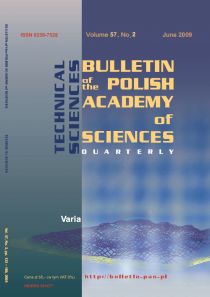POLISH ACADEMY of SCIENCES
TECHNICAL SCIENCES

| BULLETIN
of the
POLISH ACADEMY of SCIENCES TECHNICAL SCIENCES |
 |
|||
|---|---|---|---|---|
| Volume
58, Issue 1, March 2010
|
||||
| Issue Index | Authors Index | Scope Index | Web Info | |
|
|
||||
| Aims&Scope, Subscription | Editors | Authors' guide | to read PDF files | mirror: http://fluid.ippt.gov.pl/~bulletin/ |
| pp 155 - 163 |
|---|
|
Boiling in micro-channels |
|---|
| G. HETSRONI |
| Boiling heat transfer in micro-channels is a subject of intense academic and practical interest. Though many heat transfer correlations have been proposed, most were empirically formulated from experimental data. However, hydrodynamic and thermal aspects of boiling in micro-channels are not well understood. Moreover, there are only a few theoretical models that link the heat transfer mechanism with flow regimes in micro-channels. Also, there are discrepancies between different sets of published results, and heat transfer coeficients have either well exceeded, or fallen far below, those predicted for conventional channels. Here we consider these problems with regard to micro-channels with hydraulic diameters ranging roughly from 5 µm to 500 µm, to gain a better understanding of the distinct properties of the measurement techniques and uncertainties, the conditions under which the experimental results should be compared to analytical or numerical predictions, boiling phenomenon, as well as different types of micro-channel heat sinks. Two-phase flow maps and heat transfer prediction methods for vaporization in macro-channels are not applicable in micro-channels, because surface tension dominates the phenomena, rather than gravity forces. The models of convection boiling should correlate the frequencies, sizes and velocities of the bubbles and the coalescence processes, which control the flow pattern transitions, together with the heat flux and the mass flux. Therefore, the vapour bubble size distribution must be taken into account. The flow pattern in parallel micro-channels is quite different from that in a single micro-channel. At same values of heat and mass flux, different, time dependent, flow regimes occur in a given micro-channel. At low vapour quality, heat flux causes a sudden release of energy into the vapour bubble, which grows rapidly and occupies the entire channel cross section. The rapid bubble growth pushes the liquid-vapour interface on both caps of the vapour bubble, at the upstream and the downstream ends, and leads to a reverse flow. We term this phenomenon as explosive boiling. One of the limiting operating conditions with flow boiling is the critical heat flux (CHF). The CHF phenomenon is different from that observed in conventional size channels. |
| Key words: |
|
micro-channel, boiling, pressure drop, heat transfer, fluctuation |
|
|
| Issue Index | Authors Index | Scope Index | Web Info |
|---|---|---|---|
|
|
|||
| Aims&Scope, Subscription | Editors | Authors' guide | to read PDF files |
| Copyright ® Bulletin of the Polish Academy of Sciences: Technical Sciences |
|---|